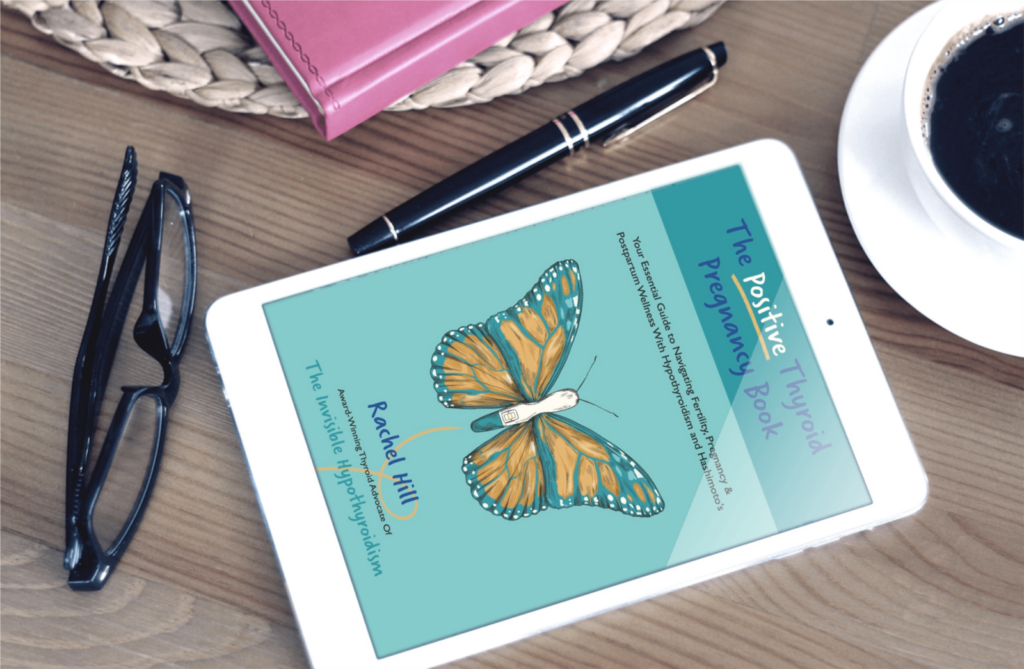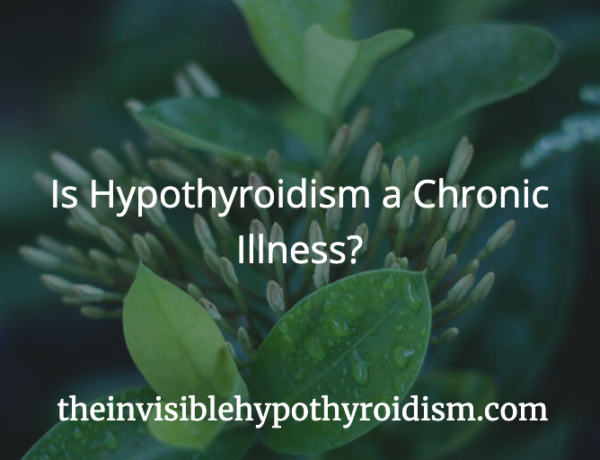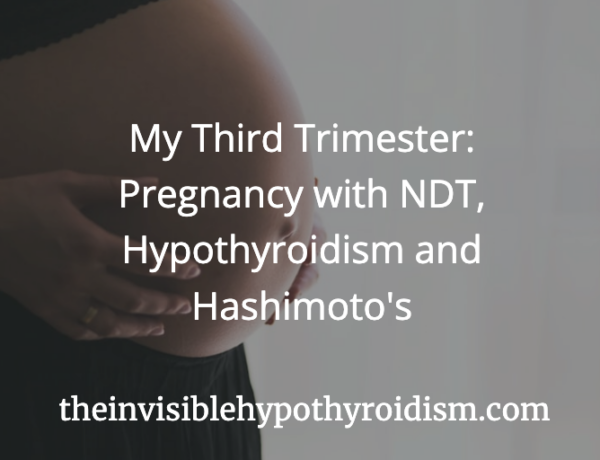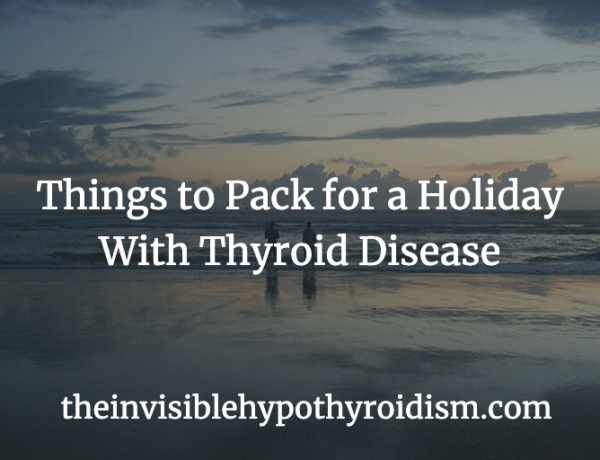Coming towards the end of pregnancy with my first child in 2020, I was often wondering what postpartum had in store for me.
I knew the usual stuff to expect; sleep deprivation with a newborn, a messy house and to have much less time to myself.
But what about my physical health? What would the hypothyroidism and Hashimoto’s look like? This naturally led me on to thinking about what I could plan or prepare to do, to support my thyroid health postpartum.
I’d lived with my thyroid condition for at least five years by this point and was familiar with thyroid flare ups, my Hashimoto’s being in remission (and also not), thyroid medication dosage adjustments every now and then, as well as other pieces of my health such as adrenal dysfunction, low vitamin levels and how poor diet or the wrong exercise could make my thyroid condition worse.
I made a plan of the things I could do postpartum in order to support getting my physical health back on track as smoothly as possible and support my thyroid health so that it would impact my experience as a new parent as little as possible too.

What did this include?
9 Ways I Supported My Thyroid Health Postpartum
It’s also worth noting here that I had given birth to my first child in early 2020, just as the pandemic situation was kicking off, which contributed towards my mental health struggling (and a subsequent postnatal depression diagnosis), as well as a much-reduced social calendar and more time at home. This actually helped me to rest more than I probably would have done had the pandemic not happened.
This enforced time at home, with just my new baby and husband, actually helped my physical health a lot and so I planned to keep things simple when my second baby was due to arrive in the summer of 2022, too.

1. I Made Sure to Pack Any Supplements and My Thyroid Medication in My Hospital Bag
Your ‘hospital bag’ is the bag you’re advised to pack when you approach full term (37 weeks) and keep either beside the front door or in your car, ready to go when it’s time to head to the hospital to deliver baby.
My hospital bag included items such as Spritz for Bits (amazing stuff – a natural spray formula created by midwives to soothe pain after childbirth) and snacks for labour to keep my blood sugar stable (cheese, nuts, olives, protein bars), as well as the obvious clothes for myself and baby, nappies etc.
But it was also important that I remembered to pack at least a few days worth of my thyroid medication and any crucial supplements.
After giving birth, I was instructed by my doctor to return to my pre-pregnancy thyroid medication dose immediately. Since you’re already guaranteed to be exhausted following childbirth, making sure you support your body by packing any essential medication and supplements is important.
Make a checklist for your hospital bag and be sure to add these to it!
2. I Kept the First Month Very Simple
Even before we knew that our baby’s first two years of life would be under pandemic restrictions, we had planned to keep the first month very simple for us all.
We had made it clear to friends and family that visits would be very limited for the first month and that mostly, we would be focusing on staying at home, getting me recuperated and all three of us bonded as a new family unit. I also wanted to focus on establishing breastfeeding (especially knowing how hypothyroidism can impact this) and have plenty of time uninterrupted to feed.
We lowered our expectations regarding a clean house (and keeping visitors to an absolute minimum meant we felt even less pressure about this, too), kept the need to cook to a minimum (when I was in the later stages of pregnancy, we batch cooked meals and stocked the freezer and kitchen cupboards with quick and easy to prepare yet healthy meals) and dedicated our limited time and energy only to essential tasks.

This meant that my body had more of a chance to recover smoothly, by limiting stress and overexertion.
3. I Revisited Vitamin Levels
During pregnancy, I kept on top of testing my vitamin levels every few months and adjusting any supplements I was taking in line with this, so as to make sure I wasn’t taking anything I didn’t need and could therefore be dangerous, but also in order to support my physical health by ensuring I was getting enough of key vitamins and minerals needed for pregnancy and my thyroid health.
After pregnancy, I carried this on, testing my levels (ferritin, Vitamin D, B12 etc.) a month after giving birth and altering my regimen based on the results. My doctor also advised that I carried on the prenatal vitamin I started during pregnancy, for as long as I was breastfeeding.
Test examples:
Vitamin D – UK test option here. UK and US test option here.
B12 – UK and US test option here.
Folate/Folic acid – UK and US test option here.
Ferritin – UK and US test option here.
Iron, T.I.B.C., Transferrin Saturation – UK and US test option here.
Magnesium – UK test here, US option here.
RBC Potassium – UK and US test here.
4. I Was Kind To Myself
I had to frequently remind myself that I was not only a new parent trying to figure all of this new, life changing information out, but I was also a new parent juggling my own chronic health condition. I needed to give myself some grace and manage my own expectations, because it was very easy to feel as if I was ‘failing’ for not doing exactly what all the other new parents were able to keep up with.
5. I Retested My Thyroid Levels Routinely
As mentioned in point number 1, I went back to my pre-pregnancy thyroid medication dose immediately following childbirth. It was then important to test the full thyroid panel (TSH, Free T3, Free T4, thyroid peroxidase antibodies and thyroglobulin antibodies) 4-6 weeks later.
At this retest, I was surprised to see that all of my levels were still optimal and, at another retest 6-8 weeks after this, they were again, still optimised and my body had quickly stabilised my thyroid levels after pregnancy and birth.
How long this takes for each person following pregnancy and childbirth can differ and depend on various factors, but testing initial levels 4-6 weeks after giving birth and then every 6-8 weeks after that until levels have stabilised, is recommended. Once stabilised, testing levels twice yearly is the norm.
6. I Checked in With a Functional Medicine Practitioner (FMP)
Whilst pregnant, I kept in mind that I may benefit from the input of a FMP after pregnancy, for support with my adrenal health, sex hormones and overall health and wellbeing. I wanted to support my body by recovering as smoothly as possible so that I could enjoy this new chapter in my life without my health getting in the way too much.
It wasn’t until I was around six months pregnant that I felt I needed the support of an FMP, however. Up until six months postpartum, I had felt well and my physical health was doing much better than I had anticipated. But, at that six month mark, my Hashimoto’s came out of remission and other parts of my health went awry too.
The FMP helped me to get my adrenal health, sex hormones, gut health and more ironed back out within a few months, so much so that my Hashimoto’s was back in remission a few months in to seeing her.
Those few months that she supported me in terms of guiding my diet, supplements and more were of great use so that I could get back on top of my health again as quickly as possible. I was concerned about it only getting worse and worse otherwise.
7. I Rediscovered Exercise
During pregnancy, my exercise routine had changed a lot. Pre-pregnancy, I did a lot of dance classes, aerobic workouts, as well as walking, but during pregnancy this shifted more towards yoga, walks and swimming.
After birth, I focused solely on walking for around four or five months, going very slowly and gradually increasing how long I would walk for as my body allowed and felt comfortable with.
Eventually, I introduced yoga and swimming again, as well as aerobic workouts and more intense exercise, but only as my body felt comfortable doing so. Over exercising is a quick way to send your health plummeting with thyroid disease, so we really do have to be mindful.
8. I Drank Bone Broth
Drinking bone broth each evening supported my gut health, adrenals, sex hormones and over all mission to holistically manage my health after pregnancy and childbirth (and breastfeeding). There’s an example shown on Amazon here.
9. I Prioritised Sleep and Energy Levels
Prioritising sleep is definitely easier said than done with a baby! Their sleep patterns (if they even have them!) can be erratic at best, but in those first few months especially, I made sure to head to bed for the evening fairly early, anticipating that I’d be woken up a lot throughout the night and during the day, I found a balance in going out for an hour or so at most during the morning or afternoon, but not both, otherwise I’d be putting myself in thyroid flare territory.
I tried to avoid comparing myself to other mums (perhaps without chronic illnesses) who seemed to be able to do a lot more and instead enjoyed soaking up days in the garden with my baby or short walks over being out for long periods of time, which depleted my more restricted energy reserves even lower.
As soon as my little one started to show signs of napping at the same sort of times each day and being able to go to sleep without much help from me (around the 3-4 month mark), I also prioritised being home for his nap times and bedtime, as well as supporting him in independently sleeping.
Some parents may consider gentle sleep training or creating predictable sleep routines for their baby, in order to increase the chances of better sleep and therefore more energy.
Once my baby was sleeping more predictably, my thyroid condition and overall health was under so much better control.

Do you have any other questions about postpartum health and being a thyroid patient? Add them in the comments below.

See Also:
The Positive Thyroid Pregnancy Book: Your Essential Guide to Navigating Fertility, Pregnancy & Postpartum Wellness With Hypothyroidism and Hashimoto’s which covers Rachel’s full two pregnancies with hypothyroidism and Hashimoto’s, on Levothyroxine and Armour Thyroid NDT and everything YOU need to know for the best start for you and your baby.
And the book Thyroid Superhero: A Kid’s Guide To Understanding Their Grown-up’s Hypothyroidism, which helps kids to understand their caregiver’s thyroid medication, flare days, symptoms and much more. Add it to their bookshelf today.





